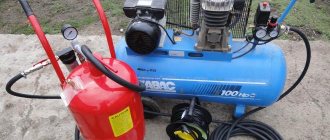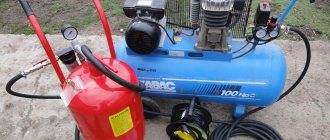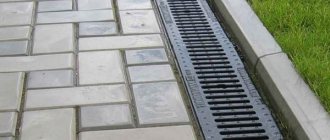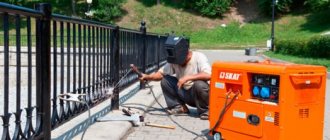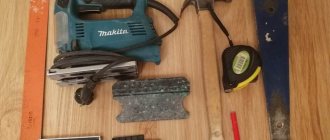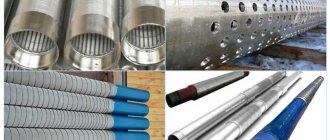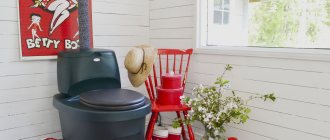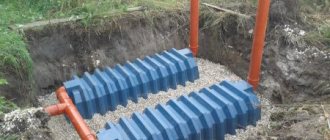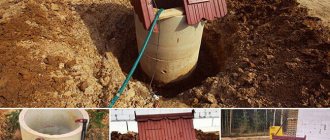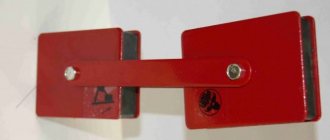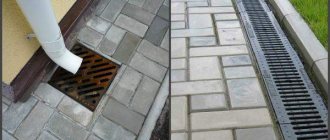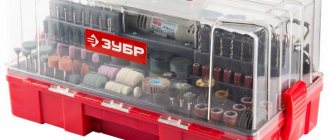Which sand to choose for sandblasting?
Experience shows that to carry out this procedure, it is not enough to have one sandblasting machine. You will also need an abrasive. It must be correctly selected and have certain characteristics. These include the following indicators:
- Hardness degree. Based on its value, it is possible to determine the resistance of particles when interacting with others that are present in a more durable substance;
- Geometric grain size. This indicator determines which tool nozzle to use and air pressure;
- Abrasive ability. It makes it possible to estimate what area can be treated with a given substance and in what time. This indicator is very important when preparing for this work;
- Resistance to various damages and chemical influences.
Before you start choosing sand for sandblasting, you need to analyze for what purpose it will be used, which is its main task. This will allow you to select an abrasive with the set of properties that will be most effective for a given case.
Characteristics of abrasive materials for a sandblasting machine
Bulk substances used as an abrasive for a sandblasting machine must have a certain set of characteristics:
- the hardness of a material shows the resistance of its particles to damage by another, more durable substance (estimated on a 10-point scale, where ten corresponds to the hardness of a diamond);
- geometric dimensions of the abrasive grain (fraction) - the documentation reflects several types of fractions, the percentage of their content (this characteristic directly affects the choice of tool nozzle and air pressure);
- a parameter that determines the number of workpieces (or surface area) processed over a specific period of time is called abrasive ability;
- resistance to mechanical damage;
- resistance to chemical attack;
- Possibility of reuse after use.
What can sandblasting be made from?
Craftsmen make sandblasting machines on their own, using very convenient metal cylinders, gas cylinders or those from large fire extinguishers. Their metal lends itself well to welding, holds pressure and lasts almost unlimited time.
Also, to get a sandblasting installation, you can use devices similar in operating principle: a high-pressure washer, a spray gun, a blow gun.
- Sandblasting, made from a Karcher sink, works with a mixture of sand and water. A nozzle with a sand container is installed on the outlet tube, and the standard tip is replaced with a ceramic or metal nozzle. To connect the sand supply, you will need a tee, which will work as a dispenser and mixing unit. The main disadvantage is working with water, which seriously limits the scope of sandblasting. And the advantage is that everything is already ready, all that remains is to add sand. And, of course, this is the only device that does not produce dust during operation.
- The spray gun is an almost ready-made installation; you just need to put a container with sand instead of a paint can and sharpen the gun to fit the nozzle of the required diameter. To do this, a mixing tee is installed on the valve, into which the air supply pipe is connected. It is quite convenient to work with such a device, but its main disadvantage is that it will then be impossible to use it as a spray gun.
- To make sandblasting from a blow gun, you need a minimum of work: everything is already ready, you just need to install a tee on it with a connection to a container with sand and an outlet nozzle. It is clearly shown in the video below.
In all three cases, the ejector principle is used to supply sand: a low-pressure area is created next to a fast flow of air (or water). Sand is drawn into it from the container. If none of the listed devices are at hand (or are, but they themselves are needed on the farm), you can make sandblasting from available materials.
Features of abrasives
One abrasive differs from another in a number of characteristics:
- faction;
- hardness;
- abrasive ability;
- mechanical stability;
- chemical resistance.
Fraction
The size of grains of consumable raw materials is measured in fractions. How does fractional distribution occur? The raw material is scattered on a special sieve, the number plate of the sieve indicates the size of the particles, depending on the size of which the fraction is separated:
- ultimate;
- coarse grinding;
- standard;
- comprehensive;
- crushed.
Factional composition
Hardness
A special device tests the hardness of blast sand. The test takes place like this: another material with higher hardness values is pressed into the abrasive, which makes it possible to determine its stability during the destructive process.
There is a special ten-point hardness scale:
Hardness scale
- 1st group – hard as talc;
- 2nd group - like plaster;
- 3rd group – like calcite;
- 4th group – like fluorite;
- 5th group - like apatite;
- 6th group – like feldspar;
- 7th group – like quartz;
- 8th group - like topaz;
- 9th group – like corundum;
- The 10th group is like a diamond.
Abrasive ability
The abrasive capabilities of the raw material depend on the area of the treated base as a result of sandblasting for a specific period of time.
Mechanical stability
To establish this characteristic, an experiment is carried out: a grain of sandblasting sand is crushed, and the level of gravity at which the particle begins to collapse is recorded.
Chemical resistance
To determine the chemical resistance, the abrasive powder is exposed to alkaline, acidic and other solutions, as well as water.
Where is abrasive treatment used?
When choosing an abrasive material, you need to understand the areas of its application:
The concept of abrasive processing
- Cleaning the metal surface from corrosion traces is carried out with preliminary cleaning with dried and sifted sand;
- Crushed sand (particle size – 0.3 mm) will add shine to copper and aluminum products;
- Sand with a particle size of 0.3-0.6 mm will remove old paintwork that is well fixed to the base;
- Sand, nickel, cooper slag, the particle size of which is 0.6-1.6 mm, will remove old corrosion traces;
- Coarse abrasive will remove welding scale and thick bitumen base;
- Steel and cast iron shots will clean and prepare the car body for painting;
- Electrocorundum, garnet sand will clean alloy steel, titanium;
- Clean fine sand, the particle size of which is 0.1-0.8 mm, will allow glass to be processed for further matting and drawing;
- Stainless steel shot and small glass granules will allow you to process a stainless steel product.
How to choose the right sand for sandblasting?
How to choose the right sand for sandblasting?
First of all, it is necessary to take into account the nature of the planned work. What are you going to do: clean an old rusty tank or paint an elegant design on the glass?
Additionally, please note the following:
- What is the strength and thickness of the contamination? Perhaps the abrasive is too fine or not hard enough to cope with this.
- The stronger the surface being processed, the harder the consumable is needed. The softer the base itself, the higher the likelihood of damage from too hard sand. For example, to process steel parts of a car you need steel or cast iron shot. Garnet sand and electrocorundum are used when working with alloy steel, titanium, and so on, when the hardness of quartz and slag is already low. To apply beautiful designs on mirrors and glass, as well as to frost glass, you will need the purest, fine, uniform sand. For working with tempered glass – electrocorundum 0.1-0.8 mm.
- To what condition does the surface need to be brought? The larger the fraction, the rougher the work. For example, to polish a base made of copper or aluminum to a shine, use a small consumable - up to 0.3 mm. If you want to peel off a durable paint coating without damaging the surface, you need a fraction of 0.3-0.6 mm. To remove rust, you need sand or slag of medium size - 0.6-1.6 mm.
- Work completion time. Particles with sharp edges and high hardness (crushed sand, crushed shot, electrocorundum) will level or clean the surface much faster, but rougher than round sand of a similar fraction. Coarse sandblasting abrasives are used to remove welding scale or remove thick bitumen coatings.
- Possibility of collecting the remaining mining. In its absence, it is economically correct to load Cooper, Nickel slag and quartz sand into the gun.
Nuances of use
If you purchase abrasive material in a store, then, as a rule, it no longer requires special preparation, however, in everyday life or in small enterprises, even ordinary river sand is used as a free alternative to purchased raw materials. The availability of such abrasive allows you not to think about consumption and reuse, but to achieve the desired result you should follow the instructions.
First of all, river sand must be carefully sifted in order to achieve maximum uniformity of the fraction without any foreign inclusions. The required fraction size is determined depending on the size of the nozzle and the characteristics of the material being processed, after which it is necessary to select a suitable mesh for exactly this particle diameter. Most often, improvised materials are used - from a flour sieve and mosquito net to tulle and construction mesh. Experienced sandblasters advise that when using river sand, do not be lazy and sift it 2-3 times.
Only after this can you start drying. In industrial conditions, it is customary to dry abrasives using specially produced dryers, but in everyday life, craftsmen have to come up with their own original solutions. Some people dry river sand on a metal sheet laid out on top of the grill; others find it more convenient to spread the future abrasive on film and dry it with a heat gun. The result is considered acceptable if the sand spills freely through a loosely clenched fist.
The presence of quartz in river sand is quite likely, so theoretically it would be worth using in special chambers with dust suppression. However, those enterprises that have such equipment rarely save enough to collect sand directly from the river, and in domestic conditions there is nothing even close to this. To avoid the development of silicosis, it is strongly recommended to carry out sandblasting work with river sand away from residential and crowded areas, and the amateur sandblaster himself must reliably protect his eyes and respiratory tract from the slightest dust particles.
To learn how to prepare sand for sandblasting, see the following video.
Types of abrasives
When selecting sand for a sandblasting gun or another type of abrasive, you need to take into account the basic properties and characteristics of the latter in order to carry out the work with maximum efficiency.
Quartz sand
It is quartz sand that is most in demand on the market for sandblasting and grinding products. It is characterized by a low price, decent quality, and is sold everywhere. Quartz sand is made from white quartz by crushing it into different fractions:
- up to 0.1 mm;
- 0.10–0.4 mm;
- 0.5–1 mm;
- more than 1 mm.
The sand undergoes thorough screening, so larger particles are practically not found in its small fractions, and sandblasting can be done without harm to the product. The material has good durability and abrasive ability, especially considering its availability. Sand will not damage delicate products or non-ferrous metals. Waste quartz sand after sandblasting can be sold as a building material.
A significant disadvantage of sand is the release of a large amount of dust, which enters the worker’s lungs and eyes, which is harmful to his health. With the regular use of sand for such grinding in the absence of personal protective equipment, a deadly disease can develop - silicosis. To avoid such problems, all equipment should be equipped with dust removal systems, and each batch of sand should be used no more than 1-2 times.
Cooper slag and nickel slag
These abrasive materials are obtained by processing slag from nickel and copper production. They are considered reusable, economical and more effective than quartz. The particle strength, hardness and abrasive ability of cooper slag is higher than that of nickel slag. Such materials can be used up to 3 times without the risk of dust.
The use of these abrasives is advisable when cleaning expensive and complex structures, which is associated with the high quality of the result, but also with the price of materials. Cooper slag and nickel slag are capable of cleaning the most durable types of metal and concrete; they do not crush along with plaque due to their high strength.
Metal (technical) shot
This material is small metal balls made from steel or cast iron. Technical shot can be cast, chopped, chipped, with the first having a spherical shape, and the rest being acute. Steel and cast iron shots are used for shot blasting and shot blasting of products that require notching (profiling) or descaling. This purpose is associated with the high strength of the materials and the presence of sharp-angled edges on their particles. After treatment, the metal base will have a high degree of adhesion and adhere perfectly to finishing coatings.
Steel shot is of good quality - it is the hardest, has the highest strength characteristics, can be used several times, and does not cause dust. The increased service life is due to additional heat treatment of the shot during its production. Stainless steel shot is used for processing structures made of the following materials:
- steel;
- zinc;
- titanium;
- aluminum;
- copper;
- bronze;
- brass;
- concrete;
- granite;
- marble.
Corundum
This material is prepared on the basis of aluminum oxide and is considered one of the most durable abrasives. Its particles are in the form of crystals, and their characteristics are close to diamond. The price of the material is high, which is why it is used for processing mainly expensive products. Corundum can be reused many times. It is ideal for decorative sanding and polishing of surfaces.
A variety of corundum is electrocorundum - a super-strong material obtained by adding a number of impurities to aluminum oxide. Its particles are not damaged at all during processing of materials, therefore repeated processing can be carried out a large number of times (after sifting). On the Mohs scale, electrocorundum is only one position inferior to diamond, it is so hard. Its grains have sharp edges and have the unique ability to sharpen themselves.
Garnet sand
Garnet, or garnet sand, is an abrasive of mineral origin, which in terms of technical characteristics is superior to quartz sand, nickel slag, and cooper slag. The material can be used repeatedly, used both for sandblasting and for hydraulic cutting of metal.
Other abrasives for sandblasting equipment
Sandblasting can present a wide variety of specific requirements. Eg:
- thick removable layer;
- low rigidity and viscosity of the coating applied to the surface to be cleaned;
- high strength of unnecessary layer on the material;
- deep penetration of impurity particles into the structure of the processed material.
This list is far from complete. However, it gives a vague idea of the cases that may arise in the work of a sandblasting master. For each of them, qualified personnel can choose one or another special abrasive.
Nickelslag
This material is a product of processing metallurgical waste during the production of nickel and slag. The abrasive is different:
- high hardness;
- complex particle shape;
- quartz content less than 1%;
- increased mass of particles compared to any quartz sand.
Nickel slag is a smart choice if you need a fairly mild treatment while reducing occupational hazards . When handling this material, little dust is generated. In addition, nickel slag can be sieved and reused. This looks even more beneficial if we take into account the small percentage of destruction of abrasive particles and, therefore, minor losses.
Important! You can sift and reuse nickel slag up to 3 times.
Cooper slag
This abrasive is very similar in properties to nickel slag. It is a product of processing metallurgical slag formed during copper production. The differences from nickel slag are as follows:
- the mass of cooper slag particles is high, the impact on the surface is more intense;
- the possibilities of recovery (reuse) are lower, the particles of cooper slag are less durable and are highly destroyed.
Plastic granules
Plastic abrasive is made from resins. These are melamine (forms the decorative surface of furniture chipboards) and amino-aldehyde resins. Both compositions have low strength, so they are used for extremely fine cleaning. This process does not harm the main surface of the material being processed.
Using plastic granules, wooden, plastic, and thin metal products are cleaned. This is mainly work related to restoration, where chemically active substances and solvents cannot be used. Industrial use of plastic abrasives is the cleaning of cultural monuments, antiques and collectibles, and rare items.
Glass granules
Glass bead processing is widely used in industry. With her help:
- gentle cleaning of the surface is carried out;
- processing is achieved without changing the color of the material and its physical properties;
- allows you to obtain a surface suitable for electroplating operations;
- Controlled removal values are obtained, which is of great importance in high-precision processes in mechanical engineering, optical and other instrument making, and watch production.
Glass shot, combining the properties of high rigidity and smoothness of particles, is destroyed extremely little . In addition, the characteristics of the abrasive make it easy to remove impurities from it after use. Thanks to this, glass beads and sandblasting granules can be reused up to 35 times.
Other types of granules and shot
In order not to dwell on each abrasive in detail, it is worth mentioning only the key properties and features of the use of different types of shot for sandblasting.
- Ceramic granules and shot in general are used in the same areas as glass. They show the lowest rates of destruction, so the abrasive can be reused up to 500 times.
- Crushed cast iron and steel shots are used for intense impact on the surface. Used to increase adhesion or local processing, for example, profiling, notching.
- Cast steel and cast iron shots are used not only for cleaning surfaces, but also for strengthening them with impact (hardening); they are used for processing before applying galvanic coatings.
- Stainless steel shot is used for cleaning special alloys and non-ferrous metals. This abrasive has a side effect: the treated surfaces, due to the transfer of tiny particles, acquire protection against corrosion or increase their own parameters.
Each type of fraction has recommendations for use. In some cases, extremely high cost-effectiveness of sandblasting is achieved. In particular, despite its significant cost, ceramic shot is very economical, since it is used up to 500 times.
Natural stone abrasive
Some countries that have sources of natural stone with high levels of hardness and brittleness offer garnet on the market. This is sand made from crushed garnet. When sandblasting, it does not generate much dust. In addition, it has a complex particle shape with many sharp edges, which guarantees an intense, but fairly soft effect on the target surface.
In terms of abrasive characteristics, garnet outperforms quartz sand, nickel slag, and cooper slag. Therefore it is used quite widely.
Electrocorundum
Electrocorundum is intentionally placed at the end of the list. This abrasive has record hardness. According to its properties, it ranks 2nd in the evaluation table, second only to diamond. The use of electrocorundum shows extremely high economic efficiency.
Read also: Checking the wire for a break with a multimeter
The abrasive can be collected and reused with virtually no loss. At the same time, the intensity of the impact on the treated surface is not reduced. Electrocorundum particles have a complex shape with many sharp edges, the edges of which have the ability to self-sharpen.
Important! The market offers both primary, smelted electrocorundum and reduced corundum. The latter is made from fragments of abrasive wheels and other materials. It is slightly inferior to the primary one, may contain impurities, but is characterized by a lower price and is therefore attractive for many sandblasting tasks.
Due to its unique hardness properties, this abrasive can be used to work on almost all materials. They can be used to matt or engrave stone, glass, carve metal, and process ceramics.
Abrasive Differences
An abrasive is a hard material with a rough surface used for abrading and polishing various substrates. Most abrasives come in fine powder form, but some include larger particles with sharp edges. Despite the existence of different types of abrasives, they are all characterized by a common property: they have sufficient hardness, therefore they are able to clean metal surfaces, concrete slabs and other materials from contamination.
When used in a sandblaster, abrasive particles are blown outward by a powerful air stream. The device gives them greater kinetic energy, as a result of which the existing plaque is quickly cleaned off. All abrasives are divided into:
- natural (sand, corundum, spar, diamond, chalk, iron ore, etc.);
- synthetic (couproslag, borazone, boron carbide, etc.).
They differ in origin and composition, degree of hardness, mechanical and chemical resistance. The most popular and inexpensive is quartz sand for sandblasting. Before going on sale, sand goes through several stages of processing, otherwise it can damage equipment. Abrasives also differ in particle size: for example, for delicate or damaged substrates, you need to choose the most gentle materials.
Hardness
All abrasives based on hardness - the ability to resist pressing other material into them - are divided into:
- superhard;
- hard;
- soft.
Even soft materials can remove dirt, but are more gentle. The hardness index is established according to the developed Mohs mineralogical scale, dividing abrasives into 10 classes. This division implies an increase in hardness as the class increases (the softest - talc - has class 1, the hardest - diamond - class 10).
Fraction
Abrasive materials for grinding surfaces differ in grain size (fineness), depending on which they are assigned certain numbers:
- fine micropowders (M10–M5);
- micropowders (M63–M14);
- grinding powders (12–3);
- grinding grain (200–15).
In other words, according to their fraction, abrasives are divided into coarse (coarse), medium, fine and extra fine. To produce them, the base material is crushed by a press, resulting in the formation of crumbs. It is sifted through special sieves and separated into powder with different grain sizes, individual crystals or fragments. Typically, abrasives of the coarsest fraction are used to clean materials from a thick layer of plaque, and the fine fraction is intended for final polishing.
Abrasive ability
By abrasive ability we mean the time period during which it is possible to clean a certain area of the product. This is the amount of material that can be sanded per unit of time. This property strongly depends on the size, hardness and other physical properties of the crystals. Also, the abrasive ability is determined by the intensity of the breakup of particles into acute-angled elements during grinding.
Mechanical stability
Different types of abrasives differ in their ability to withstand loads without destruction. Mechanical resistance depends on the compressive strength. The latter is detected by applying pressure to a crystal of an abrasive material and measuring the load at the moment of its destruction. For most abrasives, mechanical stability decreases as the ambient temperature increases. The higher the durability rating, the more times the abrasive can be reused.
Chemical resistance
This property reflects the ability of abrasive materials not to change their basic qualities under the influence of aggressive chemicals (acids, solvents, alkalis), as well as water.
Consumption of quartz sand during sandblasting
Abrasive consumption varies greatly depending on the specific treatment and is determined by the power of sandblasting, the volume of work, the fraction, the degree of contamination of the base, the size of the nozzle and other parameters. It is advisable to identify the expense indicator at the initial stage in order to calculate the total financial costs for the entire work. The best choice will be an abrasive that will have a minimum cost per unit area.
A good economic effect comes from using sand for sandblasting if its fraction is ideal for a particular type of work, and cleaning is carried out in a special box. The exact consumption may change along with the original data (for example, with different thicknesses of the rust layer on one product), and the calculations will be approximate in any case.
An example of calculating abrasive for metal processing per 1 square meter
To understand which abrasive is best suited for processing, it is worth considering the average consumption of the most popular materials when cleaning metal to a degree of Sa 2½:
| Abrasive name | Consumption, kg/sq. m |
| Quartz sand | 60–110 |
| Nickelslag | 35–80 |
| Cooper slag | 35–80 |
| Garnet | 3–7 |
| Electrocorundum | 3–10 |
| Technical fraction | 5–10 |
On average, 2–3 kg of sand is consumed per minute of processing a metal surface. The consumption of this material can be somewhat reduced by using modern sandblasting machines with a closed processing cycle, as well as vacuum systems for collecting waste abrasive.
When removing old stubborn paint, a thick layer of rust, or stuck dried cement, you will have to spend a lot of time cleaning the already used abrasive, which will have increased dust formation due to accelerated destruction. In such situations, it is worth considering purchasing a different abrasive material with greater hardness.
Sand for sandblasting apparatus and its analogues
Sandblasting of various surfaces is today recognized as a highly effective cleaning method. The quality of the treatment directly depends on the abrasive material used, since it is the sand for the sandblasting machine that comes into contact with the surface being treated, ensuring the proper degree of cleaning. Selecting an abrasive that is optimally suited for a particular type of machine and type of workpiece is very important, otherwise re-processing may be necessary.
Areas of application
Metal and concrete surfaces most often require sandblasting. In the first case, this is a relatively simple method of cold processing, which allows you to remove a damaged surface layer - covered with scale, rusted, burnt or simply dirty. This procedure not only allows you to restore the original aesthetic appearance of the product, but also stops the further spread of rust into the thickness of the metal, prolonging the life of the product.
At the same time, before subsequent painting, sandblasting is literally a mandatory procedure, because paint placed on unreliable rust will peel off along with its base in the near future. In addition, the smallest particles of abrasive also knock out tiny particles of metal from the workpiece, making the surface rough, and this contributes to a better connection of the paint to the base.
The use of an abrasive for concrete surfaces is important if it is necessary to clean the product from contaminants. In the modern world, certain categories of people like to draw or spray paint fences made of concrete and other related materials, often leaving drawings and inscriptions of unacceptable content. A sandblasting gun allows you to quickly and relatively inexpensively restore the original aesthetics of a structure.
At the same time, it is quite obvious that dismantling the product for transportation to a cleaning plant is not possible, therefore portable equipment with those types of sandblasting abrasive is used that do not produce excess dust and can be used in open space conditions.
What you should pay attention to?
To determine the best material, and accordingly purchase a high-quality abrasive, you should find out its main technical characteristics:
the fraction is of paramount importance, since the grain size in the sand allows one to achieve either maximum abrasive ability, or helps to move more gently, as if with a polish, over the material without damaging its structure: the documentation for the material contains precise instructions for the fraction, so the basic, maximum, biggest and smallest value. In this case, the percentage content of each indicator in the container is set: almost always the particle size is in the range of 0.125 - 4 mm
Also, when choosing, you should take into account the sandblasting power and the diameter of the device nozzle;
hardness. Indicates the ability of an abrasive to resist pressure from another material with greater strength. There are 10 classes in total from the softest to the hardest; abrasive ability is the amount of processed material for a period of time described in the standard; resistance to mechanical stress allows you to find out the degree of mechanical load that sand can withstand without breaking up. That is, the compressive strength of the material;
chemical resistance is the tendency of a material to resist reactions with water or solvents or acids.
After determining the quality characteristics, the question arises: where to buy sand for sandblasting? Choosing a specialized representative is a key decision, otherwise it is possible to purchase counterfeits or poor-quality advice, in some cases this poses a danger to life.
Perm sand for sandblasting has high quality indicators.
Sand is supplied under pressure to the part, which leads to ricochet. Small particles rise into the air and form a dust column. So, when performing sandblasting, it is imperative to use respiratory protection.
What is sandblasting
The sandblasting technique was patented in 1870 by American inventor Benjamin Tillman. If we describe the technology in simple words, we can imagine the surface treatment process as follows:
- an abrasive powder is selected that is specially created or suitable for solving a particular problem;
- a pneumatic compressor acts as a source of energy;
- sand, flying at enormous speed from a specially designed nozzle along with air, hits the surface being treated with force.
As a result of this effect, any dirt and coatings are removed from metal, wood, and plastic.
The highest economic efficiency of application and achieved processing results are offered by simple and common materials. In particular, the usual sifted river sand can be successfully used for sandblasting. In this case, it is possible in a certain way to select, so to speak, the characteristics of the working fluid (for example, particle size) to obtain the desired operating speed and final surface indicators.
However, if you take sand to use with a sandblasting machine, you should understand that this material has both advantages and disadvantages. The latter are so significant that processing with such an abrasive is prohibited in some countries at the legislative level.
Read also: Metal die cutting press
Factors to consider
One of the advantages of the method is that almost any product is suitable for processing structures. Available river, open-pit quarry materials, as well as crushed quartz analogues and inexpensive construction sand. Any of these options is suitable for preparing the base. Due to the low strength of the particles, it will also not be possible to damage the element by choosing the wrong product. Why are experts looking for an answer to the question: which sand is best for a sandblasting machine? It's all about the quality of work, as well as the speed of cleaning
Be sure to take into account:
- Nature of contamination and layer thickness. If the film is thick and durable, then you should choose solid products that can quickly remove unnecessary plaque;
- Material type. For processing alloy steel, as well as titanium parts, ordinary quartz sand is not used, since it does not give the desired result; At the same time, the natural mineral can be used in the preparation of steel metal structures.
- Purpose of processing. This technology is suitable for both rough cleaning of metal and for performing jewelry work - for example, creating patterns or decorative designs on glass. The quality in this case will depend on the abrasive fraction. The smaller the grains of sand and the smoother their edges, the better.
- Speed. The speed of the process is affected not only by the type of sandblasting machine, but also by the shape of the sand. For quick cleaning, it is better to choose crushed quartz.
- The quality of the base after processing. The type of substrate after completion of work depends on the purpose of this operation. When it is necessary to remove old paintwork, craftsmen use a large fraction - 0.3-0.6 mm. It removes paint well while preserving the metal backing. For more “delicate” tasks, choose an abrasive with a smaller particle diameter.
Ready solutions from
Don't know what kind of sand you need to solve your sandblasting problem? We have made a convenient table that indicates the material, its fraction, and scope of application.
| type of product | Form | Fraction (sand grain size), mm | Application |
| Quartz | rounded | 0,1-0,3 | Giving a decorative look to parts (polishing). The composition, cleared of foreign inclusions, is also suitable for decorating glass, mirrors and other purposes. |
| Quartz | rounded | 0,5-0,8 | Removing traces of corrosion. The product is used for cleaning large diameter steel pipes, bridge structures, beams, tanks, etc. |
| Quartz | rounded | 0,8-1,4 | The large size of sand grains allows the material to be used for removing viscous bitumen-based coatings. |
ADVICE:
To cope with dust, specialists additionally connect a water supply to the equipment. In this case, the already wet mixture falls on the surface, which forms less dust and dirt.
We do not recommend reusing quartz abrasive as this approach will not produce a clean surface.
Price of abrasive and where to buy?
Quite often people are interested: what should the price of abrasive materials be and where to buy them? The cost of an abrasive depends on several factors - the type of material, manufacturing method, cleaning method, country of manufacture, volume of purchased batch, and others. If we talk about comparison, then quartz sand is the cheapest for a sandblasting machine; nickel slag and cooper slag are sold a little more expensive. Steel or cast iron crushed shot, electrocorundum, and garnet are more expensive.
Cleaning a surface using sandblasting sand is called sandblasting. The operating principle of this cleaning method is to supply sand to the surface using compressed air. Thus, it is cleaned and polished. We will consider the features of the use of sandblasting sand and equipment below.
Table of contents:
Sand for sandblasting: scope of use
The sandblasting method of surface treatment is used if it needs to be prepared for treatment with anti-corrosion or antiseptic compounds. In addition, before applying decorative coatings, it is also recommended to treat the surface with sandblasting equipment.
Using this cleaning method allows you to get rid of rust or old paintwork. In addition, in this way it is possible to frost the glass, apply inscriptions to its surface or create a decorative pattern. Also, sand for sandblasting allows you to create additional surface texture, degrease it or give it a decorative appearance.
The use of sandblasting equipment in construction is determined primarily by the creation of rough surfaces. This technology allows you to clean brickwork or make a wooden surface more worn. The use of sandblasting extends the service life of these materials several times.
The scope of use of sandblasting is unlimited; this method is used in mechanical engineering, decoration, metallurgy, and reinforcement industries.
Materials for working with sandblasting sand
There are several equipment options available for sandblasting. They differ in the degree of complexity of the mechanism that performs this processing.
The most complex device is the sandblasting chamber. It is used if you need to clean a product that is too large. There are two options for such cameras:
- habitable type;
- uninhabited type.
The first option makes it possible to process large-sized elements in the metallurgy and railway industries. One of the workers may be inside such a chamber, observing and controlling the process. These cameras are also called container cameras. They come in different sizes, in relation to the dimensions of the parts that can be processed.
Uninhabited sandblasting chambers have the form of boxes, which have an opening for placing hands in it and a window through which the cleaning process is controlled. In this case, it is not possible to hire additional staff to stay in the cell. All work is carried out automatically. Sandblasting chambers resemble an injector; to ensure their operation, they require compressed air, which is pre-cleaned of oil content.
A sandblasting gun is a piece of equipment that is used for manual cleaning using sand. The scope of its use is most often limited to the construction and automotive industries.
The sandblasting apparatus consists of:
- source supplying compressed air;
- containers containing sand;
- handles based on high-strength material;
- a hose or tube that connects all components into a single structure.
In addition, the device has a nozzle that sprays sand. There are several nozzle options depending on their diameter. The choice of a particular nozzle is based on the purpose of sandblasting. The minimum diameter of the nozzle will help to engrave, and the maximum will clean the surface from rust.
The principle of operation of the device is that after it is turned on, compressed air is mixed together, and sand is removed under pressure. Using the kinetic energy of sand, paint and varnish materials or rust are removed from the surface.
There is also the option of using open installations for sandblasting. With their help, large elements, such as house facades, are cleaned. This device contains a container of sand and a hose for spraying it.
Functional purpose and features of sandblasting
Sandblasting is the treatment of a surface with sand, as a result of which it acquires a certain texture. There are several levels of surface cleaning. If we consider steel products, we will distinguish four stages of their cleaning using sandblasting equipment:
- acquiring the effect of cleaning with a metal brush;
- standard cleaning, when there is no mirror shine on the surface;
- medium degree of purification;
- complete shine of the surface as a result of its cleaning.
The degree of cleaning of the product depends on many factors, such as pre-coating the product before cleaning, the diameter of the nozzle used in the process, and the type of sand.
If necessary, sandblasting is also used to frost glass surfaces. Also, with help. sandblasting cleans plastic parts. Layers on concrete surfaces can be easily removed with sand.
The surface sandblasting process serves two functions. Firstly, it makes the surface cleaner, and secondly, it gives it texture. This effect can be achieved due to the fact that abrasive particles not only fall on the surface, but also eat into it. Depending on the type of abrasive sand and its size, the surface acquires a certain texture. After this, steel surfaces have high adhesion to any type of paint and varnish material or primer.
That is, sandblasting steel surfaces allows you to increase their service life by more than 5 times. Since after processing the metal, its surface adheres very firmly to anti-corrosion compounds.
However, the service life of steel products increases only if their sandblasting was carried out technologically correctly. Steel parts must be completely cleaned of dirt, corrosion, mill scale, paint and other paints and varnishes.
Read also: Spray gun ulig 050 00
Sandblasting sand consumption and performance advantages
We invite you to familiarize yourself with the main advantages of sandblasting metal or concrete products. Using this technology, it is possible to quickly and efficiently restore steel products or building facades before painting them. There are several degrees of cleaning of products; the choice of one or another is justified by the desired end result and further actions in relation to the object that is being sandblasted.
With the help of sandblasting, it is possible not only to clean surfaces, but also to degrease them. Removing oil stains from façade surfaces allows for high-quality painting.
Among the advantages of sandblasting we highlight:
- increasing the service life of elements subject to sandblasting;
- ease of work;
- availability of materials;
- speed of cleaning;
- Possibility of use on various types of surfaces: wood, concrete, metal, glass;
- the cost of equipment for sandblasting is quite affordable;
- the possibility of additional surface decoration, for example, creating frosted glass or engraving.
At the same time, the variety of sandblasting machines allows you to perform work on various types of areas. There are different types of equipment that can be used for cleaning. Sandblasting can even clean car rims and give them extra shine. In this case, a special camera is used to perform the work. Next, work is carried out to additionally clean the discs from the primer and coat them with varnish or paint.
Sandblasting with quartz sand: execution technology
Before starting work, the person who will sandblast the device must study the technological map. It indicates all the technological characteristics of the device and the level of its possible processing. We invite you to familiarize yourself with an example of a technological map for a facade - instructions for sand from sandblasting devices:
- When cleaning a façade using sandblasting equipment, a dry abrasive mixture is used, which is supplied using special open-type equipment;
- sand for sandblasting in bags should have moderate humidity, no more than two percent, while the size of the holes for the passage of sand should not exceed one millimeter;
- The air supply from the compressor is carried out through a special hose, in a special tank it is connected to sand;
- Please note that the operating pressure should not be more than four atmospheres, as there is a risk of damage to the façade surface;
- when cleaning the facades of multi-storey buildings, on the first three floors, a pressure of about 3 atmospheres is applied;
- Please note that when sandblasting, the nozzle is deformed, therefore, the sand consumption rate increases, keep an eye on these characteristics;
- if you do not replace the damaged nozzle, then the pressure decreases, and, accordingly, the productivity decreases;
- in order to remove dust and sand remaining on the facade, compressed air is used, which is supplied through the same installation.
Sand for sandblasting machine: use and features
If you plan to clean the facade using sandblasting, then to carry out the work you will need to purchase a special unit or make it yourself. In principle, if you have a compressor, it is not difficult to build such an installation. To make it you will also need a hose, a nozzle and a cylindrical barrel for mixing sand with compressed air.
When purchasing sandblasting guns, we recommend choosing German-made products. Although their cost is quite high, it pays off in the process. If you plan to carry out a large amount of work, you will need a pneumatic machine for facades. Its purchase is relevant if you plan to clean facades in the future.
With the help of such installations, it is possible to clean not only smooth, but also embossed versions of facades. In addition, the device is lightweight and has optimal dimensions. Therefore, one or two people are enough to transport it.
There are many materials used in the abrasive cleaning process. In addition to regular and quartz sand, nut shells and other materials of small size are also used. The consumption of air, abrasive substance and water, if available, is controlled directly by the person performing the work individually, depending on the area in which he works.
To improve the work process, work is carried out with the addition of water, which is supplied under a certain pressure. In order to ensure this process, a regular hose should be connected. The maximum water consumption in 60 minutes is 125 liters. This prevents dust from accumulating during cleaning.
There are types of surfaces that require the use of more than one abrasive. In this case, there is a special suction valve that is installed in one or another abrasive. However, for better cleaning, it is recommended, if necessary, to perform the work again.
Please note that reusing the material is unacceptable, as the quality of cleaning will be low. Sand consumption for cleaning using sandblasting ranges from 40 to 250 kg per hour.
Among the structural elements of a standard sandblasting installation, the following should be highlighted:
- a pistol that has an air nozzle;
- jet nozzle;
- suction valve;
- a hose about five meters long;
- tank in which the device will be stored.
When choosing a sandblasting device, make sure that it meets all fire safety regulations and has features that can be used to quickly stop its operation.
Sand waste from cleaning and sandblasting devices must be disposed of, as its further use is prohibited. In addition, quartz sand is generally not recommended for cleaning, due to the high risk of danger when working with it.
During the rapid development of the production of metal structures at the end of the 19th century, a product was needed that could clean the metal in order to subsequently apply a protective anti-corrosion and decorative coating. One of the most convenient and effective cleaning methods has become the use of a pneumatic device, which throws fine abrasive from a nozzle at a speed of 300-800 km/h and above, in other words, sandblasting. Thanks to this device, you can easily clean any surface, not just metal.
Already in the 50s of the 20th century, it became clear that engineering and technological progress could not provide anything new to improve pneumatic sandblasting machines, which is why specialists focused on the development and implementation of new types of consumables. However, choosing among a large number of materials is still difficult for the buyer. Therefore, we propose to dwell in detail on the question of which sand is best to use in each specific case.
What is sandblasting?
How to clean metal from rust, scale, layers of old grease, carbon deposits? What if it’s not metal, but wood or concrete? Special chemical cleaners cannot be used everywhere and not always, and you have to rub the surface with sandpaper, metal brushes, and then admire the network of small and not very scratches.
An alternative to this treatment is sandblasting. With its help, you can remove various contaminants from the surface without any problems, and the treated area is cleaned much faster and more efficiently, and dirt is removed even from porous materials (for example, wood or concrete).
Another option for using sandblasting machines is working on wood or glass. With certain skills, you can make magnificent stained glass windows with selective matting, engravings and relief patterns.
A sandblasting machine is a fairly simple device in principle. It gives a powerful stream of air mixed with abrasive (ordinary sand). It can be used to process large areas as well as complex parts with many small elements. The flow of sand perfectly removes any layers of dirt, oxides and carbon deposits, leaving a clean surface without scratches.
When you need a sandblasting machine regularly, but don’t want to buy it (most often for financial reasons), you can make it yourself.
Design and principle of operation
A homemade sandblasting machine has a fairly simple design.
- A compressor, preferably powerful enough.
- A working container (cylinder) into which sand is poured.
- Branch pipe with a shut-off valve for adjusting the sand supply.
- Spray gun (nozzle).
- Connecting hoses.
Sandblasting diagram: 1 - air supply from the compressor;
2, 13, 15 — connecting tees; 3, 5 — air supply adjustment; 4 - pressure sensor; 6, 14 - pipelines; 7 — overpressure valve; 8 - dry sand; 9 — air supply control valve; 10 — rubber gasket of the filler neck cover; 11 — sand supply adjustment valve; 12 — sand container; 16 — air supply with sand to the nozzle; 17 — filling neck; 18 — filler neck cover. It all works very simply.
- Two pipes are inserted into the working container. The top one is for connecting to a compressor to create excess pressure inside the cylinder. The lower one is for supplying sand. To regulate the flow intensity, a tap is inserted into this pipe.
- The air flow from the compressor is divided into two parts: one goes into the upper pipe of the cylinder to pump pressure inside, the second is connected to the lower pipe to create an air-sand mixture at the outlet.
- From the lower nozzle, a mixture of sand and air under pressure is supplied to the spray gun or nozzle.
It all looks not too complicated and is quite accessible for self-assembly.
Areas of application of abrasive materials
The area of use of abrasives may vary depending on their type, strength, cost, and fraction. For example, river or quartz sand is most often used to remove paints, rust, and dirt from building facades and metal bases. To polish products made of copper, aluminum and similar materials, use quartz sand with a particle size of 0.1–0.3 mm; to clean metal from stubborn paint, it is better to take a sand fraction of 0.3–0.6 mm.
Old traces of rust, which are difficult to remove chemically, are removed by sandblasting using 0.6–1.6 mm sand or nickel slag or cooper slag. The same abrasives can be used to remove welding scale from metal structures. Technical shot is most often used for cleaning:
- small, medium, heavy casting;
- rolled carbon and stainless steel;
- products subject to painting, electroplating;
- car body parts.
During processing, shot also helps to strengthen torsion shafts, coil springs, and spring leaves. Electrocorundum, corundum is used for cleaning and grinding titanium, alloy steel, and tempered glass.
Other types of abrasives
A number of other materials are also used for sandblasting today:
- Electrocorundum is a crystalline abrasive produced industrially. It has good hardness and high abrasive ability. Used for processing stone and hard metal alloys. It is noticeably lighter than sand, which allows you to acquire a larger number of particles of the substance per unit mass. Since the material can be reused, it is widely used for decorative glass work, cleaning metal parts, and stone processing. Electrocorundum contains practically no silicon, it is safe for the sandblaster operator and others.
- Cooper slag or nickel slag is produced by processing slag from smelters of copper or nickel, respectively. They contain a minimal amount of free quartz, so they can be used in open sandblasting machines. These abrasives are widely used in many modern industries where various types of surfaces are prepared for painting. They are characterized by a high specific density of grains and can be reused.
- Garnet sand is a natural material. It is regularly used in waterjet installations for cleaning and cutting metals. It is assessed as environmentally friendly, safe, and its use is not associated with the risk of silicosis. Not carcinogenic or toxic.
- Shot made from steel, cast iron or other metal is today recognized as one of the optimal abrasive materials of our time in terms of efficiency. The possibility of repeated use compensates for the rather high price. Due to the fact that the fractions of the shot are divided quite accurately, good surface uniformity and adhesive properties are achieved, protective coatings become better, and the consumption of paints and varnishes is reduced. The shot is optimal for cleaning metal workpieces from scale before painting them; if it is used in a shot blasting chamber, the cost of the treated surface becomes minimal.
Glass beads, glass beads, granulated plastic and other substances or compositions that have the necessary properties for the relevant work can also be used as an abrasive material.
How to choose the right consumables
It is clear that sandblasting different types of surfaces requires different consumables. The right choice allows you not only to increase the efficiency and speed of the processing performed, but also to significantly save on its implementation. The following factors influence which consumable material to choose for a sandblasting machine.
- The thickness of the layer of coating or contamination that needs to be removed, as well as its strength. If you choose a fine abrasive with low hardness for a thick and durable layer of coating or contamination to be removed, you may simply not achieve the desired result.
- The hardness of the material being cleaned. For harder substrates, you should choose a harder abrasive, and for soft ones, a less hard one, so as not to damage the surface being treated.
- Requirements for the surface condition after treatment. If the cleaned surface should have a minimum number of dents and chips, then for its processing you should choose an abrasive of a finer fraction.
- Required sandblasting speed. A hard abrasive, the particles of which have sharp edges, provides a higher processing speed than a similar one with rounded particles.
- Possibility of organizing the collection and reuse of abrasive. If this is not possible, then it is more advisable to use more inexpensive materials for processing: quartz sand, cooper slag and nickel slag.
Comparison of the main parameters of abrasive materials will help you make the right choice
Materials for sandblasting
From a certain point in the development of sandblasting technology, it became clear that improving the characteristics of the equipment used for these purposes is unable to increase the efficiency of the process. That is why experts began to think about which sand was best to use for sandblasting, and began to seriously improve the characteristics of such consumables. The result of this work is that a wide variety of abrasive materials for sandblasting have appeared on the modern market, the choice of which is quite difficult for a person without experience.
General diagram of the sandblasting machine
For a long period of time, only quartz sand was used to perform abrasive processing. As technology developed, new substances began to be used to carry out such work, which are superior to ordinary sand in their performance characteristics and safety of use. Typically, quartz sand in many countries is no longer used for sandblasting due to safety requirements.
Abrasive sand, hitting a metal surface at high speed, turns into dust, which, affecting the human respiratory system, can lead to the emergence and development of such a serious lung disease as silicosis. This dust, spreading around the treatment area, has a harmful effect not only on the sandblasting operator, but also on people who are even at a considerable distance from the work site.
Specialized sandblasting workshop
Ordinary sand for sandblasting, in addition, has a number of other disadvantages, which include the following.
- Due to its low hardness, ordinary quartz sand cannot effectively process the surfaces of structures made of many materials.
- The speed of sandblasting when using regular sand is quite low, which leads to increased consumption of abrasive.
- Quartz sand cannot be reused after sandblasting, since most of it turns into dust due to the low strength of the particles.
Approximate sand consumption
Despite these disadvantages, quartz sand continues to be actively used for sandblasting, which is facilitated not only by its affordable cost, but also by a number of other advantages of its use. These include the following.
- Waste sand, from which a coarse fraction has been separated by sifting, can not only be reused, but also resold, having previously been packaged in bags.
- The low strength of sand means that you don’t have to worry about causing irreparable damage to the treated surface if the size of the fraction is chosen incorrectly. This quality of abrasive material is especially important if the surfaces of products made of soft non-ferrous metals are processed.
- When using such sand, you can use any type of nozzles without worrying about them being subject to active wear. As for nozzles made of the hardest materials (boron carbide and tungsten carbide), their wear rate when working with ordinary sand is several times lower than when using other abrasives.
- Almost any sand (river, sea, quarry, desert) can be used as such an abrasive material, which must first be dried to the required humidity and sifted, separating large fractions from it.
- The use of any sand, even taking into account the need for its preliminary preparation, significantly reduces the cost of sandblasting.
- From the total mass of sand, particles of various sizes can be distinguished, which allows you to optimally select an abrasive for processing a certain type of surface.
Preparation of river sand for sandblasting
As preparation measures, the sand should be thoroughly dried and sifted. It must be completely dry before loading into the sandblaster, otherwise the device may be damaged. The permissible level of humidity is determined by squeezing the material with your hand - it should flow freely through your fingers. The sand fraction must ideally match the size of the nozzle, which is achieved by sifting on sieves with cells of the required size.
How to sift sand for sandblasting?
To clean sand at home, you can use improvised means - tulle, gauze, flour sieve, mosquito net. The main thing is to sift the abrasive several times so that it is of high quality, uniform in particle size and does not include foreign impurities.
How to dry sand for sandblasting?
The easiest way to dry the sand is in a special drum dryer. The installation has a convenient drying chamber and a built-in sieve, so the time and effort required to prepare the abrasive will be minimal. If such a device is not available, you can dry the sand over the flame of a fire. To do this, a sheet of metal, an iron box, or another metal container is fixed above the fire, where the sand will be located. Some craftsmen dry the material using a heat gun, scattering it on film. This is convenient and easy to do, and the quality of the finished abrasive will be at a decent level.
What sand is suitable for a sandblaster?
In the mid-20th century, new abrasives began to be actively invented and used. Today, there are many types of consumables for sandblasting machines on the market. This article is intended to help the buyer navigate this diversity and figure out which sand for sandblasting should be chosen in a given situation.
- 1 How to choose the right sand for a sandblasting gun?
- 2 How to choose the right sand for sandblasting?
- 3 Cleaning solid external surfaces with quartz sand
- 4 Consumption of quartz sand during sandblasting
- 5 Preparation of river sand used for do-it-yourself sandblasting
- 6 How to sift sand for sandblasting
- 7 How to dry sand for sandblasting
- 8 Where to get sand for sandblasting
